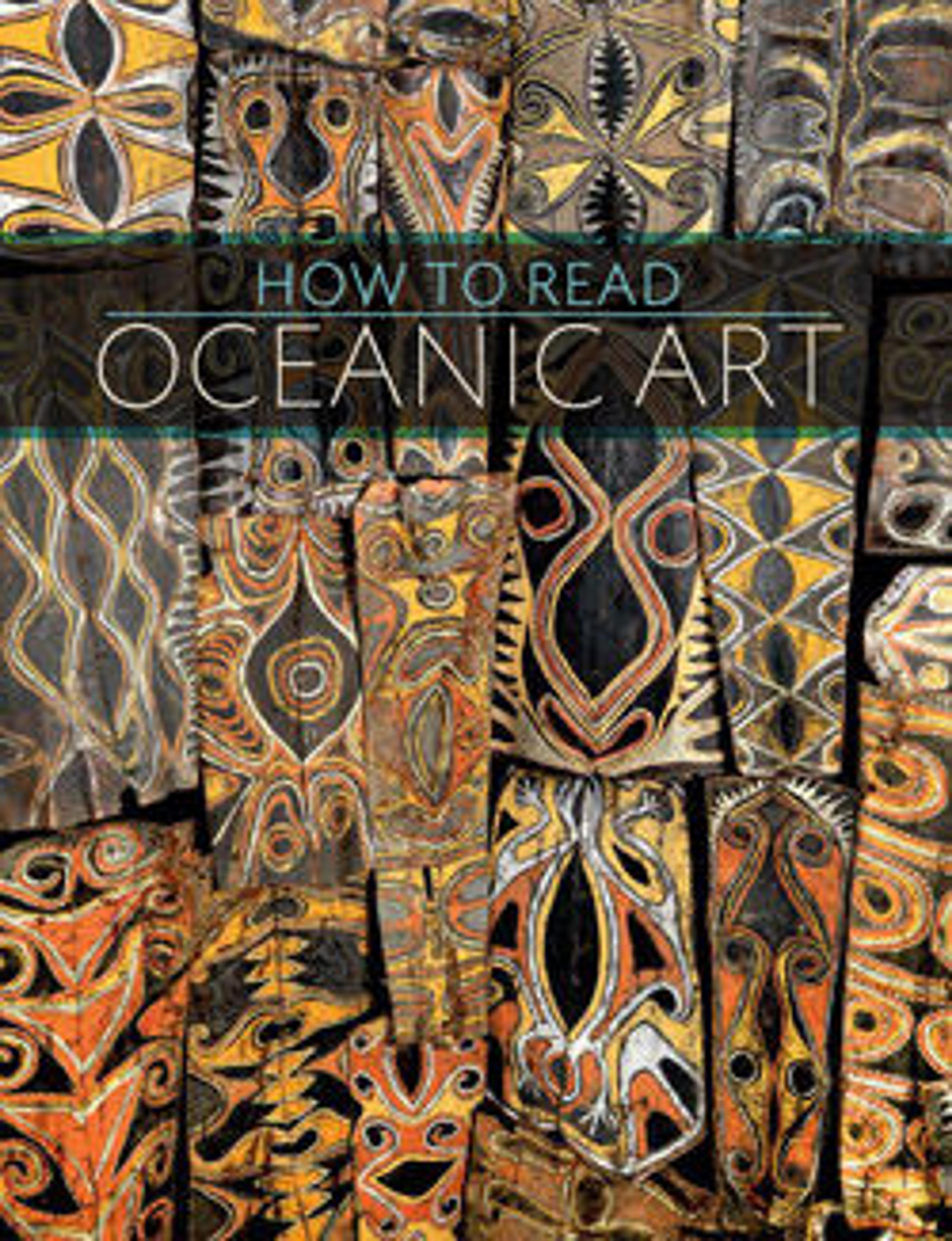Lintel Carving from a Ceremonial House
The ceremonial houses of the Mountain Boiken people in the Sepik River region of Papua New Guinea, share many architectural features with those of the neighboring Abelam people. Both groups construct towering triangular facades adorned with paintings. A decorative lintel carving, spanning the full width of the facade, separates the upper painted section from the entrance below. Yangoru Boiken ceremonial houses are predominantly associated with primordial spirits (wala) and with spirits that inhabit the surrounding forest. While the large facade paintings represent eyes and other features of wala, the lintel carving depicts a continuous row of nine small, upright figures, likely representations of these same primordial spirits, which alternate with ten brightly colored bird figures. This row of upright figures is bracketed at either end by a large anthropomorphic face shown lying on its side. The entire work is painted in white, red, yellow, and black with accents of bright blue provided by a coloring agent known as Reckitt’s blue, which was circulating in the region from the early decades of the twentieth century.
An important, large-scale work, this lintel has been a vital element of the Met’s New Guinea sculpture collection since the Michael C. Rockefeller Wing first opened in 1982. Boiken lintel carvings are extremely rare, with only roughly a dozen examples known, many of them fragmentary. Of the existing corpus, the present work, which is complete, is by far the finest in terms of the quality of its carving, completeness, and condition.
An important, large-scale work, this lintel has been a vital element of the Met’s New Guinea sculpture collection since the Michael C. Rockefeller Wing first opened in 1982. Boiken lintel carvings are extremely rare, with only roughly a dozen examples known, many of them fragmentary. Of the existing corpus, the present work, which is complete, is by far the finest in terms of the quality of its carving, completeness, and condition.
Artwork Details
- Title:Lintel Carving from a Ceremonial House
- Date:early to mid-20th century
- Geography:Papua New Guinea, Prince Alexander Mountains, Middle Sepik River
- Culture:Yangoru Boiken
- Medium:Wood, paint
- Dimensions:55 lb., 12 ft. 6 in. (24.9 kg, 381 cm)
H. 13 in. × D. 9 3/4 in. × L. 12 ft. 6 1/8 in. (33 × 24.8 × 381.3 cm) - Classification:Wood-Sculpture
- Credit Line:Gift of Lynda Cunningham, 2012
- Object Number:2012.515
- Curatorial Department: The Michael C. Rockefeller Wing
More Artwork
Research Resources
The Met provides unparalleled resources for research and welcomes an international community of students and scholars. The Met's Open Access API is where creators and researchers can connect to the The Met collection. Open Access data and public domain images are available for unrestricted commercial and noncommercial use without permission or fee.
To request images under copyright and other restrictions, please use this Image Request form.
Feedback
We continue to research and examine historical and cultural context for objects in The Met collection. If you have comments or questions about this object record, please contact us using the form below. The Museum looks forward to receiving your comments.
